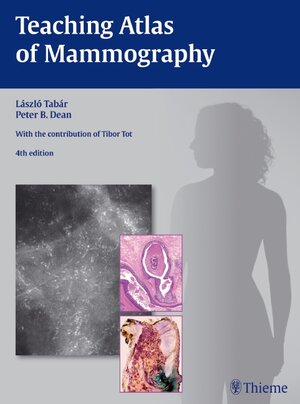
×
![Buchcover ISBN 9783131503916]()
The names Tabar and Dean are associated with high-quality mammography worldwide. In this fourth edition of the bestselling Teaching Atlas of Mammography, readers are again invited to share in the authors' experience of analyzing and evaluating mammograms. Their systematic approach not only instills a full understanding of the principles of mammography but also provides the requisite knowledge and tools to arrive at a highly accurate differential diagnosis. Rather than starting with the diagnosis and demonstrating typical findings, the approach of this atlas is to teach the reader how to analyze the image and reach the correct diagnosis through proper evaluation of the mammographic signs. Prerequisites for the perception and evaluation of the mammographic findings are optimum technique, knowledge of anatomy, and understanding of the pathological processes leading to the mammographic appearances. Special features: Revised and expanded case studies, based on 40 years of imaging experience, provide instructive long-term follow-up of patients over a period of up to 25 yearsOffers a unique comparison of imaging findings with the corresponding large thin-section and subgross thicksection (3D) histologic images to facilitate an understanding of the pathologic processes and the mammographic appearances they lead toIncludes an abundance of coned-down compression views, microfocus magnification views, and specimen radiographs to support the analytic workupTeaching Atlas of Mammographyand the Breast Cancer book series by the same authors are essential for residents in radiology and practicing radiologists who need the highest level of training in the radiologic anatomy of the normal breast and the changes associated with benign and malignant lesions. They will help ensure that all clinicians acquire the optimal technique and knowledge of pathologic processes necessary to reach a correct




